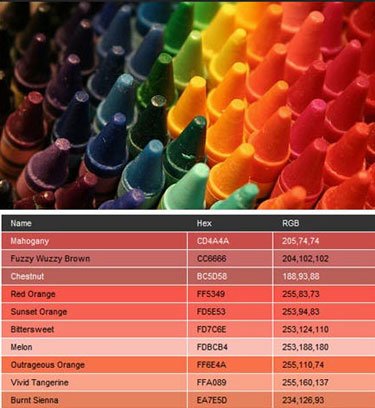The Crayolification of the World, Part 1:
Different cultures and different languages recognize colors differently. In Japan, the traffic light we describe as green is referred to as blue.
Over time, new names have been invented for particular portions of the color continuum and, voilà , a new color was created.
Brent Berlin and Paul Kay began studying how 98 different languages name colors in the late 1960s.
Curiously, the differentiation of colors seems to proceed in stages, with various languages stopping at varying points in the same process of differentiation.
Of course, how we differentiate colors is, in the end, based on our physiological capabilities. Some other species with different eyes could differentiate fewer colors; some others far more.
———————-
We then come to the Sapir-Whorf hypothesis, which holds that language determines how people conceptualize the world.
Koreans are familiar with the colors yeondu and chorok, both light green, but yeondu is a more yellowish light green. Looking at color charts, Koreans are found to differentiate yeondu from chorok quicker than Westerners who don’t speak Korean leading cognitive psychology types to infer that what must be happening is that the language-oriented portion of brain must be joining in to assist the visual perception of the Koreans.
This matches the results of experiments showing slight differences is the speed of color identification acuity between our right and left sides.
And apparently once children learn the names of colors, the advantage in speed changes from one side to the other.
Interesting stuff.
———————-
And here’s a game which tests how good you are at matching colors.






Please Leave a Comment!